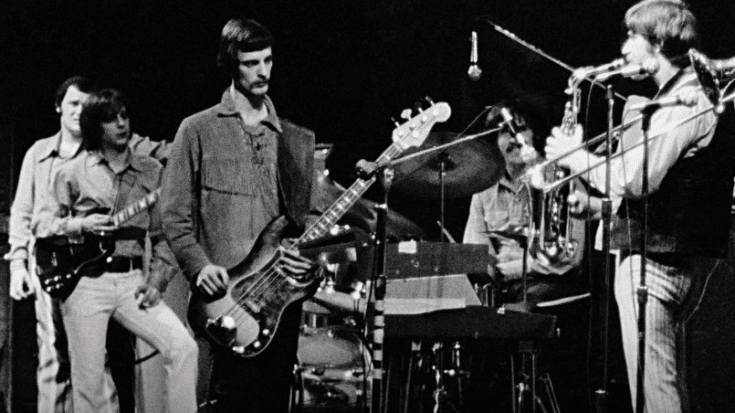10 Underappreciated Classic Rock Bands of 1967

via Blood, Sweat and Tears / YouTube
1967 was a landmark year for music, a time when rock was evolving and experimenting. It was the year that saw the release of iconic albums and the rise of bands that would define a generation. Yet, amid these success stories, there were bands equally deserving of acclaim but who somehow slipped through the cracks of mainstream recognition. These groups pushed musical boundaries and left an indelible mark on the rock genre. Let’s shed some light on ten such underappreciated classic rock bands from that seminal year.
Blood, Sweat & Tears
When Blood, Sweat & Tears stepped onto the scene, they brought with them a fresh fusion of rock, jazz, and blues. Their self-titled debut album, released in 1968, was a breath of fresh air. Songs like “Spinning Wheel” showcased the band’s ability to blend these genres into something that hadn’t been heard before. Their sound was rich and daring, aiming to bridge different musical worlds together.
However, despite the innovation and the skill clearly evident in their debut, Blood, Sweat & Tears didn’t grab the spotlight as firmly as some of their contemporaries. Even with their critical success and a defined fan base, they remained on the edge of the wider recognition they deserved. Their role in merging genres paved the way for future bands to experiment beyond traditional rock boundaries.
Blue Öyster Cult
Blue Öyster Cult stood out for their intricate guitar work and unique sound. Known for their harmonious guitar interplay between Andy Powell and Ted Turner, they created a distinctive musical style. Although recognition grew with their albums in the 1970s, particularly with hits like “Don’t Fear the Reaper,” their early work laid the groundwork for this success.
At their core, Blue Öyster Cult was innovative and ahead of their time. Despite the accolades that came with their later work, their initial contributions often go unrecognized in discussions about the great rock bands of the era. They managed to carve out a unique space in rock music, merging melody with mystique.
Fairport Convention
Fairport Convention is a band notable for their contribution to the British folk-rock movement. Blending traditional folk melodies with rock instruments and rhythms, they created a sound that was both classic and groundbreaking. Their 1969 album “Liege & Lief” is often cited as a landmark in the folk-rock genre, influencing a host of bands that would follow.
Despite their influence, Fairport Convention did not achieve the commercial success of some of their peers. Their importance to the development of folk-rock remains undervalued, yet their music continues to inspire. The skill with which they combined different elements to create something new and vibrant is a testament to their creativity and versatility.
Spirit
Spirit’s debut album showcased their penchant for psychedelic soundscapes. With tracks like “Fresh Garbage” and “Mechanical World,” they offered a taste of their experimental approach to music. Their sound was a mix of rock, jazz, and blues, layered with a psychedelic sheen that made it stand out.
However, Spirit was more than just a psychedelic rock band. Their music contained a level of complexity and innovation that set them apart. Despite the critical acclaim for their debut, they struggled to find a footing in the mainstream. Their contribution to the evolution of the rock genre, though significant, remains underappreciated.
The Nice
The Nice, featuring Keith Emerson, was a band that crossed the boundaries between rock, jazz, and classical music. Their album “The Thoughts of Emerlist Davjack” was a pioneering work that introduced listeners to a new form of rock music. They were unafraid to experiment and challenge the norms of what rock music could be.
The impact of The Nice on the development of progressive rock is undeniable. They laid the groundwork for bands that would take rock music in new directions. Still, their contributions often go unnoticed, overshadowed by bands that would come to define the progressive rock genre.
NRBQ (New Rhythm and Blues Quartet)
NRBQ brought an eclectic style to the rock scene, blending elements of rock, blues, and pop into a cohesive sound. Their debut album is considered a hidden gem, filled with tracks that highlight their versatility and musical prowess. Their ability to cross genres made them stand out, yet they remained largely under the radar.
The band’s commitment to their unique blend of music, coupled with their impressive musicianship, should have earned them a spot among the notable bands of their time. Yet, they continue to be one of the more overlooked groups, despite their contribution to the diversity of rock music.
Traffic
Traffic, formed by Steve Winwinwood, was a band that made an immediate impact with their debut album “Mr. Fantasy.” Featuring hits like “Dear Mr. Fantasy” and “Paper Sun,” the album was a showcase of their innovative approach to rock music. They combined elements of rock, jazz, and psychedelia to create a sound that was their own.
Despite the acclaim for their music, Traffic is often overshadowed by other bands of the era. Their influence on the development of rock music, especially in incorporating different musical styles, is significant. They managed to carve a unique niche in a crowded musical landscape, one that deserves greater recognition.
Nazz
Nazz, fronted by Todd Rundgren, released their self-titled debut to a warm reception. Their song “Open My Eyes” garnered attention for its catchy melody and innovative sound. The band had a knack for blending pop sensibilities with rock, setting the stage for Rundgren’s later solo career.
Despite their promising start, Nazz didn’t achieve the lasting fame some expected. Their music, though well-crafted and appealing, didn’t quite break through in a time of great musical experimentation. Nonetheless, their debut remains a noteworthy entry in the rock catalog of the era.
The Stooges
Led by the dynamic Iggy Pop, The Stooges brought a raw energy to the rock scene that would influence the development of punk rock. Their self-titled debut is considered a classic, with its aggressive sound and unfiltered lyrical themes. They were unapologetic in their approach, paving the way for a more gritty, raw form of rock.
While The Stooges gained a cult following, their impact on the wider rock and punk scene was immense. They introduced an intensity and honesty that would become hallmarks of punk music. Despite this, their contributions are often overlooked in favor of more commercially successful bands.
T. Rex
Initially known as Tyrannosaurus Rex before transitioning to T. Rex, this band was at the forefront of the glam rock movement. Their hits in the 1970s, like “Bang a Gong (Get It On),” showcased their ability to craft catchy, glam-infused rock songs that appealed to a wide audience.
T. Rex’s transition from folk to glam rock marked a significant evolution in their sound, one that would influence the direction of rock music. Despite their success with later hits, the groundwork laid by their earlier work is often not fully appreciated. Their ability to evolve and influence the music scene cements their place among the notable but underappreciated bands of their time.






















